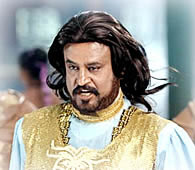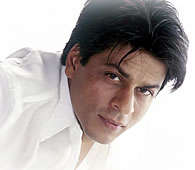
VATICAN CITY (AFP) -
Pope Benedict XVI gave the go-ahead Saturday for greater use of the old Latin mass, signalling a bid to heal a decades-old split in the
Roman Catholic Church.
But the move, which also applies to other religious rituals, is controversial and leading figures have already expressed misgivings.
A papal decree said priests should now meet requests by the faithful to hold mass in the traditional Church language, which had widely been dropped after the Second Vatican Council in the 1960s.
"In parishes where there is a stable group of faithful who adhere to the earlier liturgical tradition, the pastor should willingly accept their request to celebrate the Mass according to the rite of the Roman Missal published in 1962...," said the decree.
"The pastor, having attentively examined all aspects, may also grant permission to use the earlier ritual for the administration of the Sacraments of Baptism, Marriage, Penance and the Anointing of the Sick, if the good of souls would seem to require it," it added.
The virtual abandonment of the Tridentine mass after the Second Vatican Council in 1965 was one of the causes of a breakaway led by French Archbishop Marcel Lefebvre in 1970.
The move was to encourage the greater use of the mass in local languages, one of a series of reforms made by the council in a bid to modernise the Church.
Traditionalists say the Tridentine mass, named after the town of Trento, now in northern Italy, is more spiritual and historically authentic than the modern version.
French bishops secretly approached the pope late last year to voice their concerns about his then apparent readiness to revive the Tridentine mass.
Cardinal Jean-Pierre Ricard, chairman of the French bishops' conference, said in November that differences with followers of Lefebvre were not only liturgical, but also theological, dealing with religious freedom, ecumenism, inter-religious dialogue and politics.
He warned Saturday that the pope's "real motivations may not be well understood" by the public and the priests, but he did not expect many requests for traditional mass.
"I don't see a tsunami coming," he said.
Lefebvre's followers hailed the pope's decision, adding however that other difficulties remained.
The Priestly Society of Saint Pius X, in a statement from Lefebvre's successor Bernard Fellay, said it "rejoices to see the Church ... regain her liturgical Tradition, and give the possibility of a free access to the treasure of the Traditional Mass for the glory of God, the good of the Church and the salvation of souls, to the priests and faithful who had so far been deprived of it."
The favorable climate established by the decree should make it "possible -- after the decree of excommunication which still affects (the society's) bishops has been withdrawn -- to consider more serenely the disputed doctrinal issues," the association added in the statement posted on its website.
The pope opened a dialogue with Lefebvre's followers in August 2005, four months after he was elected as head of the Roman Catholic Church, by receiving Fellay.
Prior to his death in April 2005, Benedict's predecessor John Paul II sought to bring traditionalists back into the Roman Catholic fold, allowing the celebration of the Tridentine mass so long as it was conducted only by bishops.
In a separate letter to the bishops, Benedict said he was motivated by a need to reconcile worshippers as it had become "apparent that a good number of people remained strongly attached to this usage of the Roman Rite which had been familiar to them from childhood.
"This was especially the case in countries where the liturgical movement had provided many people with a notable liturgical formation and a deep personal familiarity with the earlier form of the liturgical celebration.
"We all know that, in the movement led by archbishop Lefebvre, fidelity to the old Missal became an external mark of identity; the reasons for the break which arose over this, however, were at a deeper level."
The pope asked bishops to report back to the Vatican three years after the new decree takes effect on September 14.
"If truly serious difficulties come to light, ways to remedy them can be sought," he said.
Vatican spokesman Federico Lombardi insisted Saturday that the choice given to priests did not mean that the Church was taking a step back.
"Benedict XVI does not mean to revolutionise today's liturgy which was updated by the Second Vatican Council, as it will continue to be followed by a large majority of worshippers," he said.
"He does not impose a step back, he wants no weakening of the Council authority or of the authority and responsibility of bishops."
And Cardinal Dario Castrillon Hoyos, head of the Vatican commission which speaks to the dissidents, said they should recognise the validity of the more modern mass.
The Nazi-hunting Simon Wiesenthal Centre meanwhile criticised Benedict's decision, as the old Latin mass included a prayer for the conversion of Jews.
The centre asked Benedict "to declare this text contrary to the current teaching of the Church, in accordance with the Second Vatican Council".





